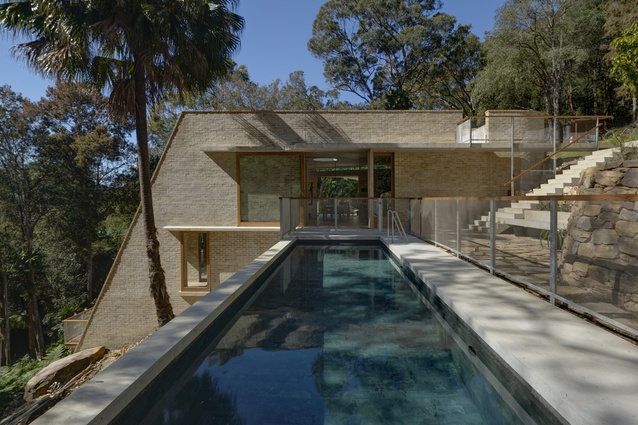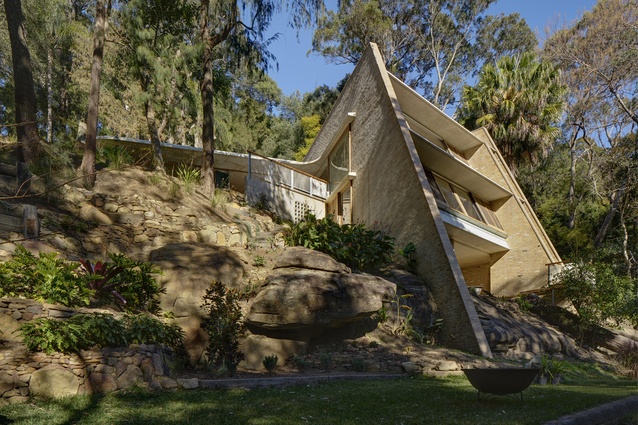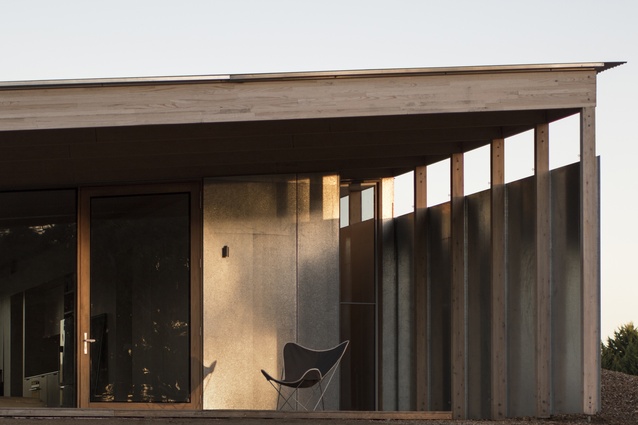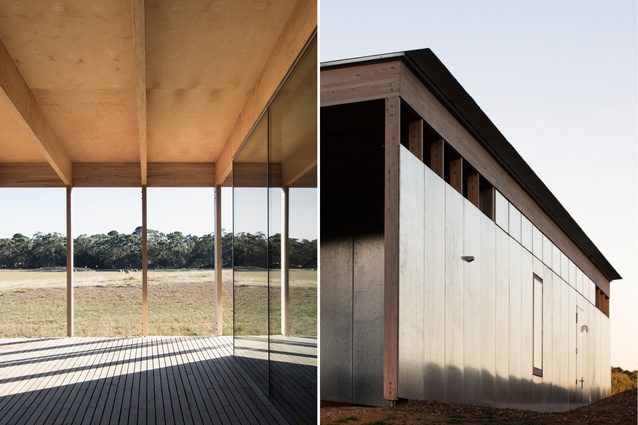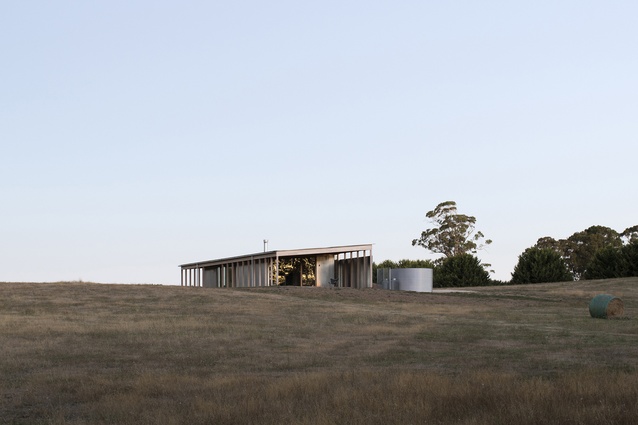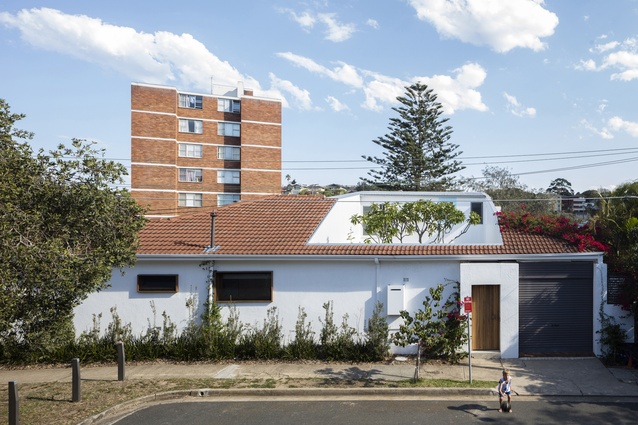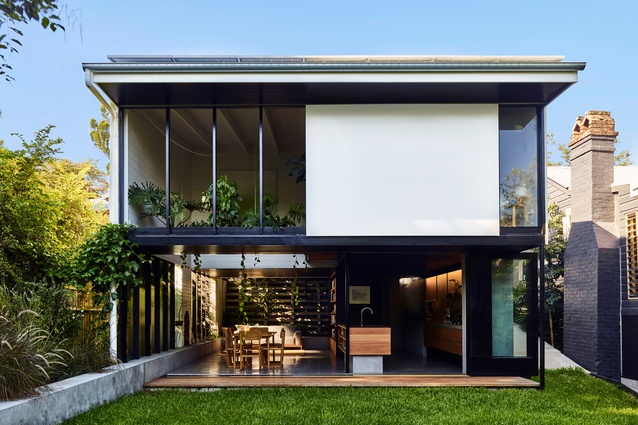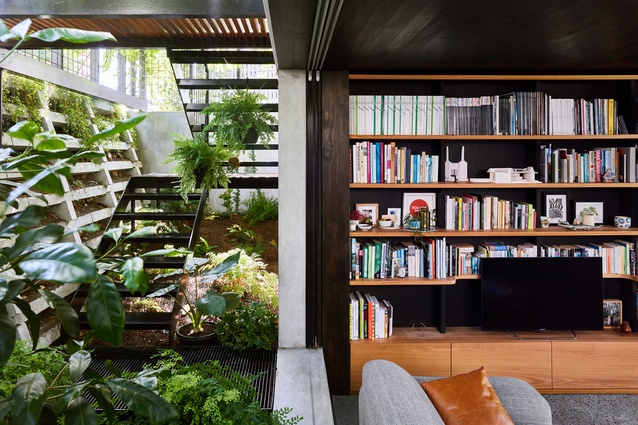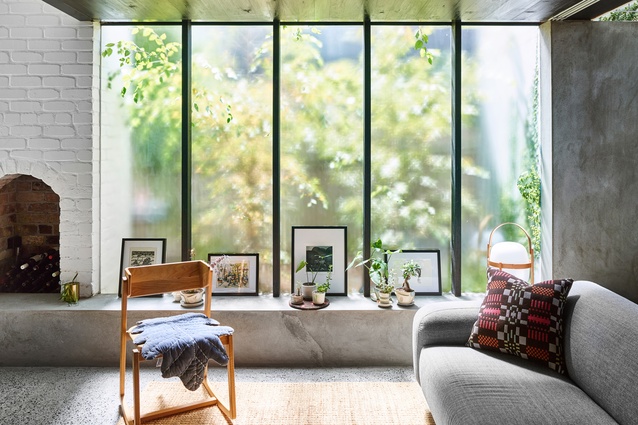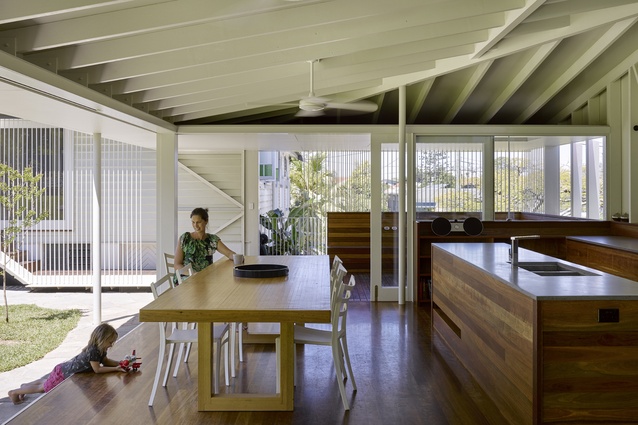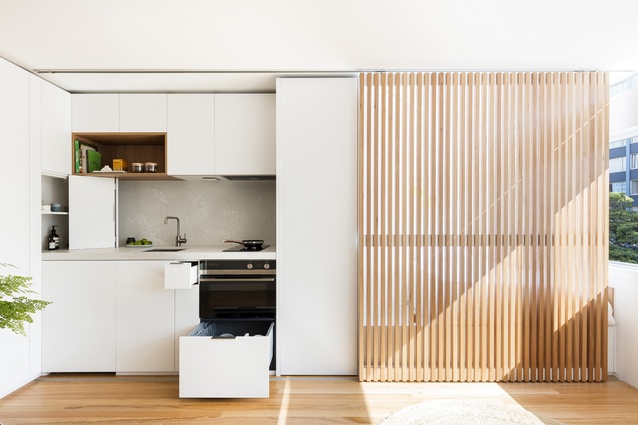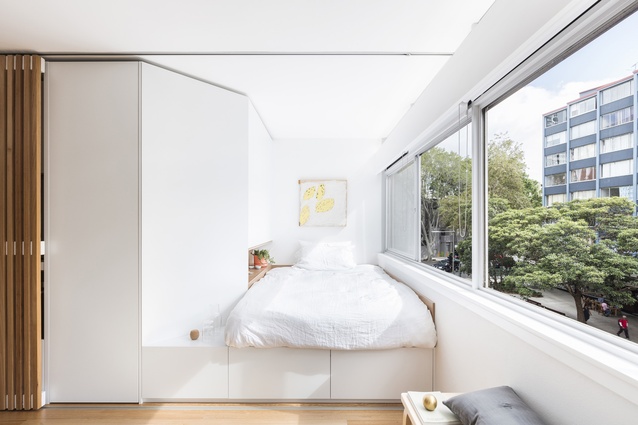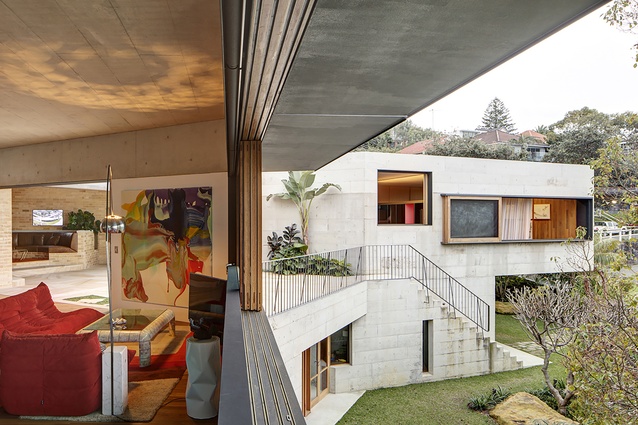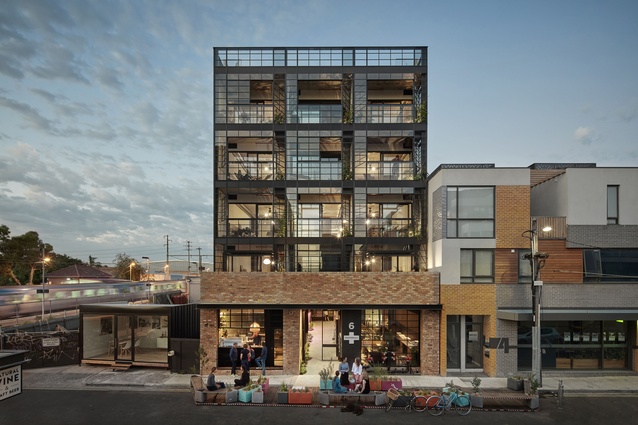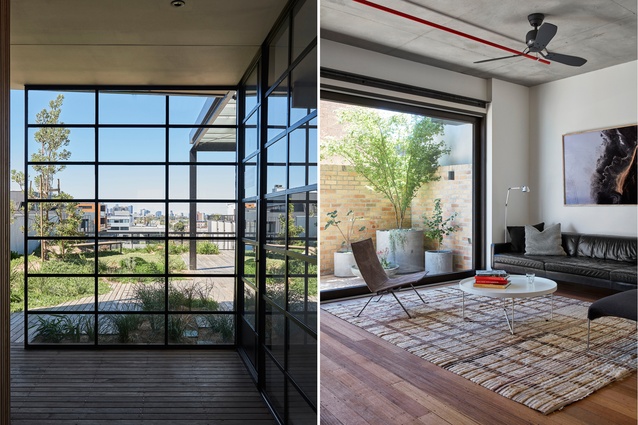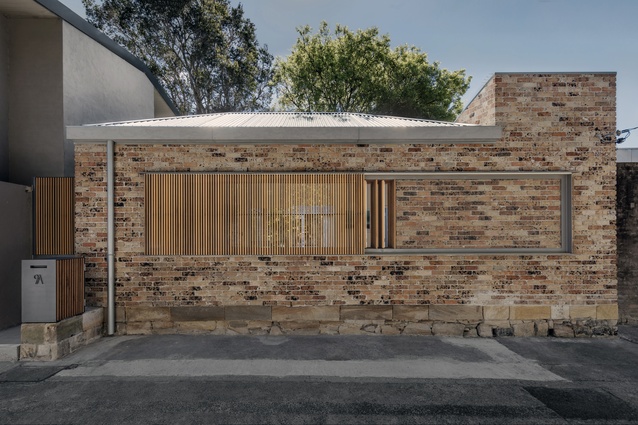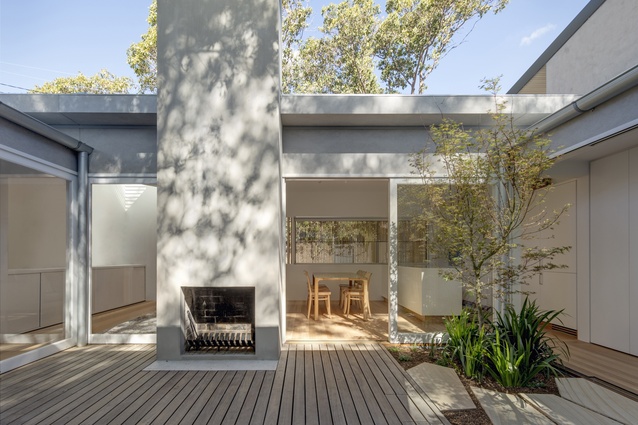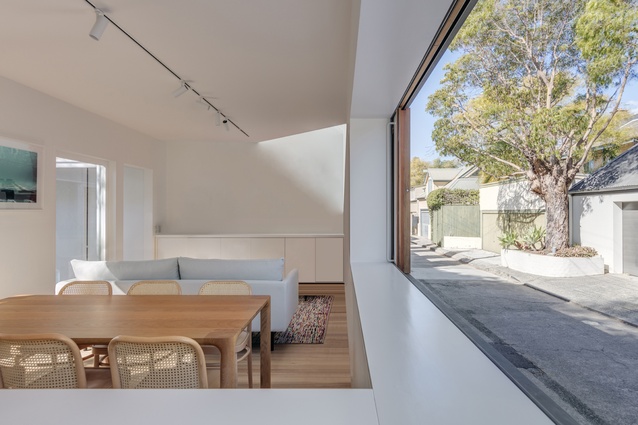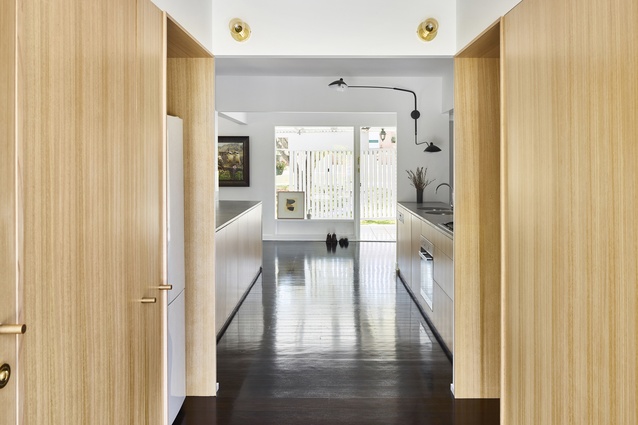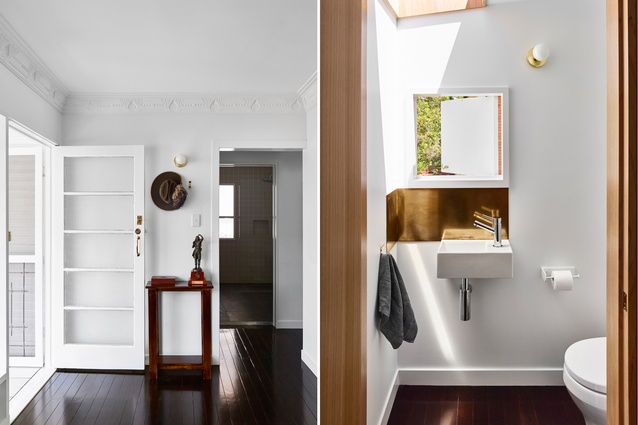Australia’s best houses announced
The winners of the nine categories from the Houses Awards 2018 and the Australian House of the Year award have been announced. The Houses Awards, organised by Houses magazine (Australia), honour projects and practices each year that create the best homes throughout Australia.
This year, Cabbage Tree House by Peter Stutchbury Architecture took home the top prize of Australian House of the Year. Awards organisers say that the house is accompanied in the winner’s circle ”by an outstanding collection of architectural works, including a sloped roof residence in a former paddock, an alteration inspired by a hole in the roof, a restored 1920s Queenslander and a micro-domestic apartment”.
Stuart Vokes, 2018 jury member, says, “Australia is witnessing a growing diversity of housing product as a consequence of changing social and economic forces. Architects are responding with exciting examples of innovative typologies, diverse spatial scales and socially responsible models evident amongst this year’s awarded projects and practices.”
See a full list of winners with abridged jury citations below:
Australian House of the Year and New House Over 200m2
Cabbage Tree House by Peter Stutchbury Architecture (Bayview, NSW)
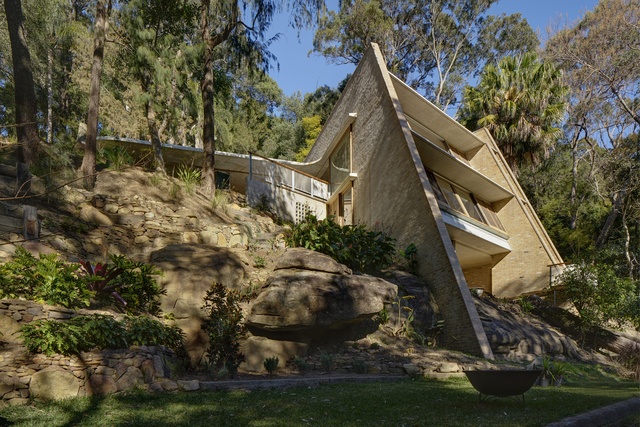
The jury said: “The Cabbage Tree House is a remarkable, complete Australian house that authentically and poetically embraces its landscape setting on Sydney’s northern beaches. Anchored in a rock shelf, the masonry structure leans back into the hillside as a “physical manifesto of the character of its place.”
Although this house is undeniably an impressive piece of architecture, it has the warmth, layers and inhabitation of a welcoming home. Every design detail is considered – from the circular skylights that give glimpses of blue skies above, to the handcrafted timber handrail to the stair. It is a house through which one can reconnect with nature – not as a museum piece, but as a home to be lived in. This home is the Australian House of the Year for it timeless qualities, impressive sculptural forms and connection to place.”
New House Under 200m2
Springhill House by Lovell Burton Architecture (Springhill, VIC)
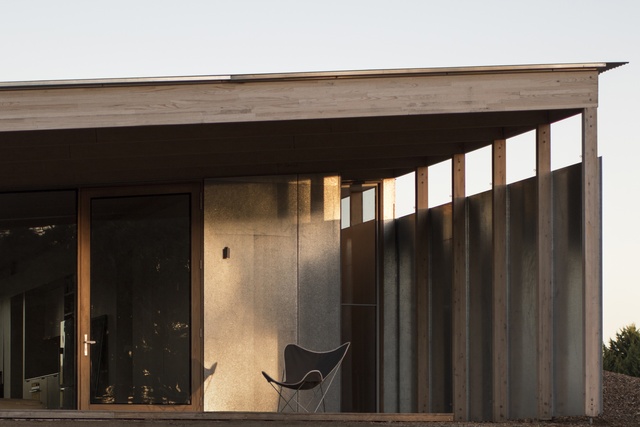
The jury said: “Springhill House makes a significant contribution to residential architecture in Australia. It responds to its setting, brief and budget with utility, clarity and rigour. Sited on a north-facing slope in a disused agricultural paddock, this house for an author is both economical and delightful.
The canny, efficient plan is organized by a rhythmic linear form that relates to structural bays. Slender timber portal frames allow for clear spans and a large, single-pitch roof that provides shade of varying depth around the house, which is broadened or contracted according to orientation and strong solar passive design principles.
The structural rhythm is broken on the north side to mark a large opening to living areas, and is sheathed on the southern arrival side by galvanized sheet cladding, which gives the house a taut, sheer expression – tough, yet gleaming and mirage-like.”
House Alteration and Addition Under 200m2
There were two joint winners for this category this year.
Hole in the Roof House by Rachel Neeson and Stephen Neille (Bronte, NSW)
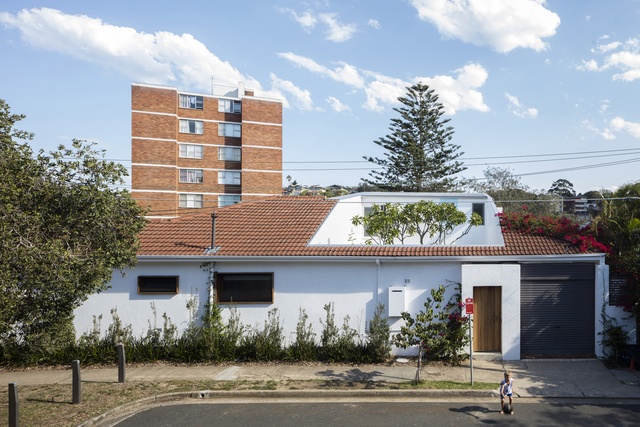
The jury said: “Hole in the Roof House is a delightful alteration and addition to a suburban bungalow, located on a noisy road close by to Bronte Beach.
The originally unremarkable home has been transformed into a “domestic sanctuary” by cutting a hole in the roof to make way for a courtyard with a mature frangipani tree. The planning of the home revolves around and engages with the carved-out space, located on the naturally quietest part of the street.
This courtyard, paired with the indoor living area, becomes the heart of the dwelling. The courtyard demonstrates the positive attributes of negative space; as well as being a quiet, peaceful focus for the house, it brings light to the centre and enables cross-breezes without loss of privacy – and there is no need to lock up and air-condition the home. Rich spatial experiences are achieved through a layering of the plan, long and short vistas, changes in scale, landscape and the curation of light.”
Terrarium House by John Ellway (Highgate Hill, QLD)
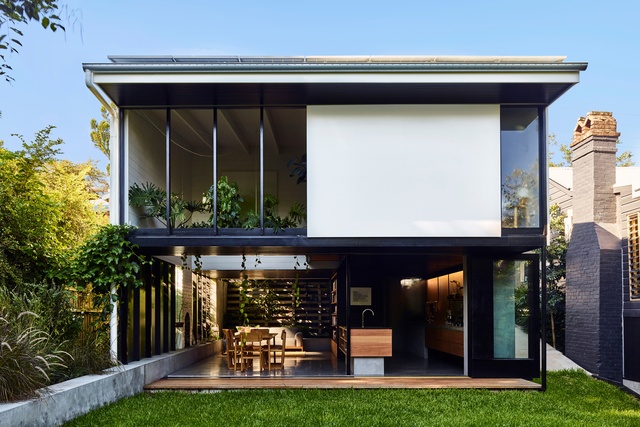
The jury said: “A familiar Queensland worker’s cottage has been transformed into a luscious, planted oasis. John Ellway has deftly exploited the site’s natural fall by inserting living spaces underneath the raised original cottage. This move has deconstructed the classic verandah arrangement to create a wonderful, breezy and vine-covered entry and external vertical circulation.
The design of the Terrarium House is attuned to its subtropical climate, promoting cross-ventilation with a sunken living space protected from the harsh Queensland sun. The compactness of the house is its triumph; circulation flows seamlessly from one space to another and not one inch is wasted, with notable Japanese influences. A double-height space above the dining area gives the impression of space, without deterring from the intimacy and warmth of the home.”
House Alteration and Addition Over 200m2
Morningside Residence by Kieron Gait Architects (Morningside, QLD)

The jury said: “Morningside Residence is a quiet, respectful and poetic addition to a 1920s Queenslander house. The original Queenslander has a story of craft and care; the new addition works subtly in the same way, with simplicity of plan and a focus on the art of making.
With a small, elongated footprint the new pavilion defines a generous north-facing outdoor living space – a simple strategy that creates high livability with an economy of means. The pavilion serves contemporary open-plan living, responds to climate and context, and preserves the original house as a quite retreat, more inwardly focused and with sleeping areas.
At a time when Brisbane is losing significant numbers of its historic housing stock to demolition or unsympathetic makeovers, the Morningside Residence provides an enduring alternative that is more true to culture and place.”
Apartment or Unit
Boneca Apartment by Brad Swartz Architects (Rushcutters Bay, NSW)
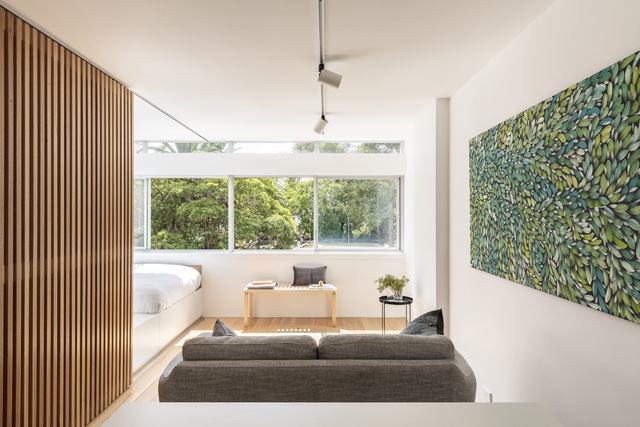
The jury said: “With a growing appetite for micro-domestic space in the residential market, this tiny renovated apartment is a timely reminder that the division and articulation of territory in the home is essential, no matter the scale. In this instance, the clear delineation between the functions of rooms and the public and private character of rooms is supported by the miniaturization of known spatial devices and practices.
Here, a singular and familiar architectural element, a sliding slatted timber screen, defines the function of the apartment at any given time. The position of this screen – there are only two – determines either a private room for sleeping or lounging, or a public room for cooking and socializing.
All the programmed spaces – bathroom, kitchen, robe, sleeping alcove – are clearly arranged into a single integrated core, yielding a living room comparable in scale to that found in a regular one-bedroom apartment.”
Garden or Landscape
Coastal Garden House by Neeson Murcut Architects with 360 Degrees (Bronte, NSW)
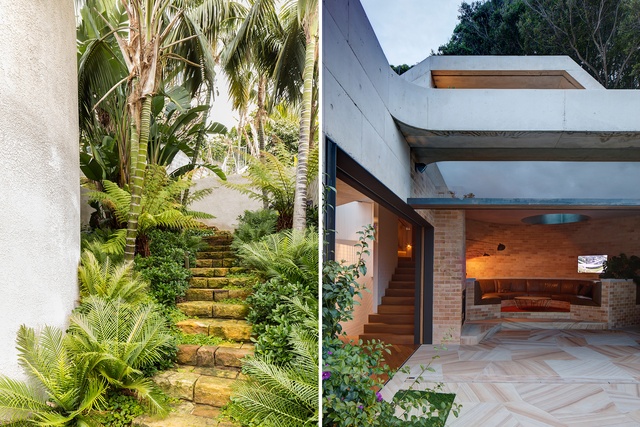
The jury said: “A garden is one of the most compelling symbols of home. The design brief for this project was a large house, however, the architects responded with a strategy for a large garden. Here, a new flamboyant family home is set in an exotic coastal garden that preserves and intensifies a former domestic garden on the site, grounding and immersing the family and their domestic rituals in a terraced, episodic sandstone rock terrain.
The house is designed to be engulfed by its garden, but it is also seen as an extension of it – archaic, cave-like, a re-occupied ruin – with aspects of nature finding their way inside through random stone floors, planted roofscapes and creepers negotiating its exterior walls.”
Sustainability
Nightingale 1 by Breathe Architecture (Brunswick, VIC)
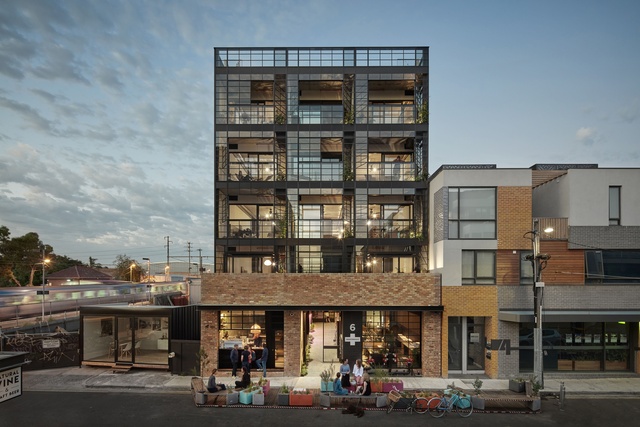
The jury said: “Nightingale 1 is the beginning of an ambitious experiment that aims to shift the status quo of apartment design in Australia. It is the commitment and self-belief, plus the tireless campaigns that make this project so successful, sustainably.
Nightingale 1 achieves all the standard environmental sustainability benchmarks, however, it is the social and economic elements that make it a sustainability masterpiece: generous communal amenities, useable public space, alternative finance structure and clever and efficient construction techniques. The project also attains carbon-neutral operation using a fossil fuel-free embedded network.
The building encourages its inhabitants to lead a more sustainable lifestyle through the sharing of laundry facilities, growing vegetables, learning to work together as a community rather than as just a household, and taking the train or riding a bike to work. Nightingale 1 aims to use architecture “as a catalyst to building community.” For this reason, it is an undoubtedly impressive example of sustainable architecture.”
House in a Heritage Context
Bolt Hole by Panov Scott Architects (Woollahra, NSW)

The jury said: “While the site and existing building aren’t noted for their individual heritage contribution or significance, they fall within the fine-grain precinct of the Woollahra Heritage Conservation Area C15 of inner Sydney. Accordingly, this project was subject to precinct and form controls. The building’s neighbours are the outbuildings of larger, individually noted heritage buildings fronting major streets either side of the lane. The original building (C. 1980) has been carefully considered and predominantly reused by the architects in a confident manner, but with a light touch.
By turning the project to the laneway the architects and the owner have made a contribution to the life of the lane, reciprocated in turn to the occupants of the dwelling. The enormous pressures due to the current rates of growth in the major cities in Australia and the associated challenges of providing quality housing of various types in inner and middle suburbs, often in heritage contexts, is amply addressed in this small but significant design.”
Emerging Architecture Practice
There were two joint winners for this category.
Brad Swartz Architects
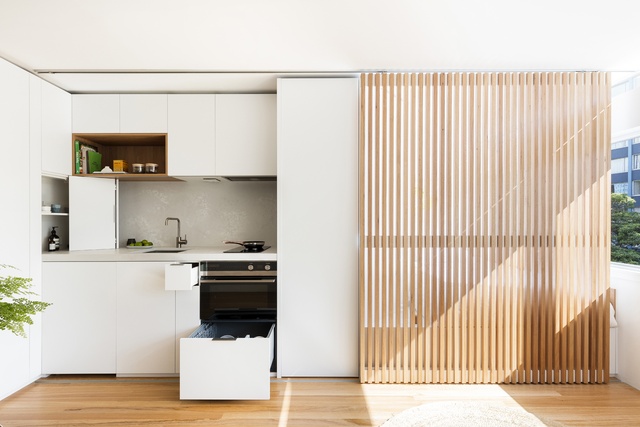
The jury said: “Sydney-based Brad Swartz Architects won the Apartment or Unit category of the 2015 Houses Awards with the twenty-seven-square-metre Darlinghurst Apartment, in the same year that the practice was established. Since then, this emerging practice has continued to refine the art of the Tetris puzzle that is small-space design, and this year is again the winner of the Apartment or Unit category. By making the most of clever joinery, demonstrating spatial innovation and using cost-effective design strategies, Brad Swartz Architects reminds us that good design can be made available to all.
The practice’s body of work to date is concerned with making better use of existing spaces and the need to achieve rich amenity within the increasingly confined footprints of our capital cities. The Loft x2 is an example of infill housing that doubles the density of a set of Sydney terrace sites. Boneca Apartment and Darlinghurst Apartment are examples of the reuse of existing building stock that no longer suited contemporary lifestyles. Each project is refined, with a real sense of delight at what is possible. The jury is excited to see what’s next for this inspirational young practice.”
Zuzana & Nicholas

The jury said: “Nicholas Skepper and Zuzana Kovar established Brisbane-based Zuzana and Nicholas in 2013. With both directors having completed PhDs, this practice has an emphasis on research, testing architectural ideas and how things are made. There is a multi-modal approach to practice, from writing and exhibitions to commissioned architectural work. There is a subtlety to the residential projects by Zuzana and Nicholas that stems from considered restraint and a genuine understanding of context and site.
Commended in the Alteration and Addition under 200 m2 category, the Monash Road House involves the clever reconfiguration of an existing postwar Queenslander house through minimal interventions and new insertions. The series of considered and in-depth design responses are promising of an exciting trajectory for this emerging practice.”
View a full list of projects which received commendations at the 2018 Houses Awards here.
Extended coverage of the Houses Awards 2018 can be found on architectureau.com and in the August 2018 issue of Houses magazine (Australia).

